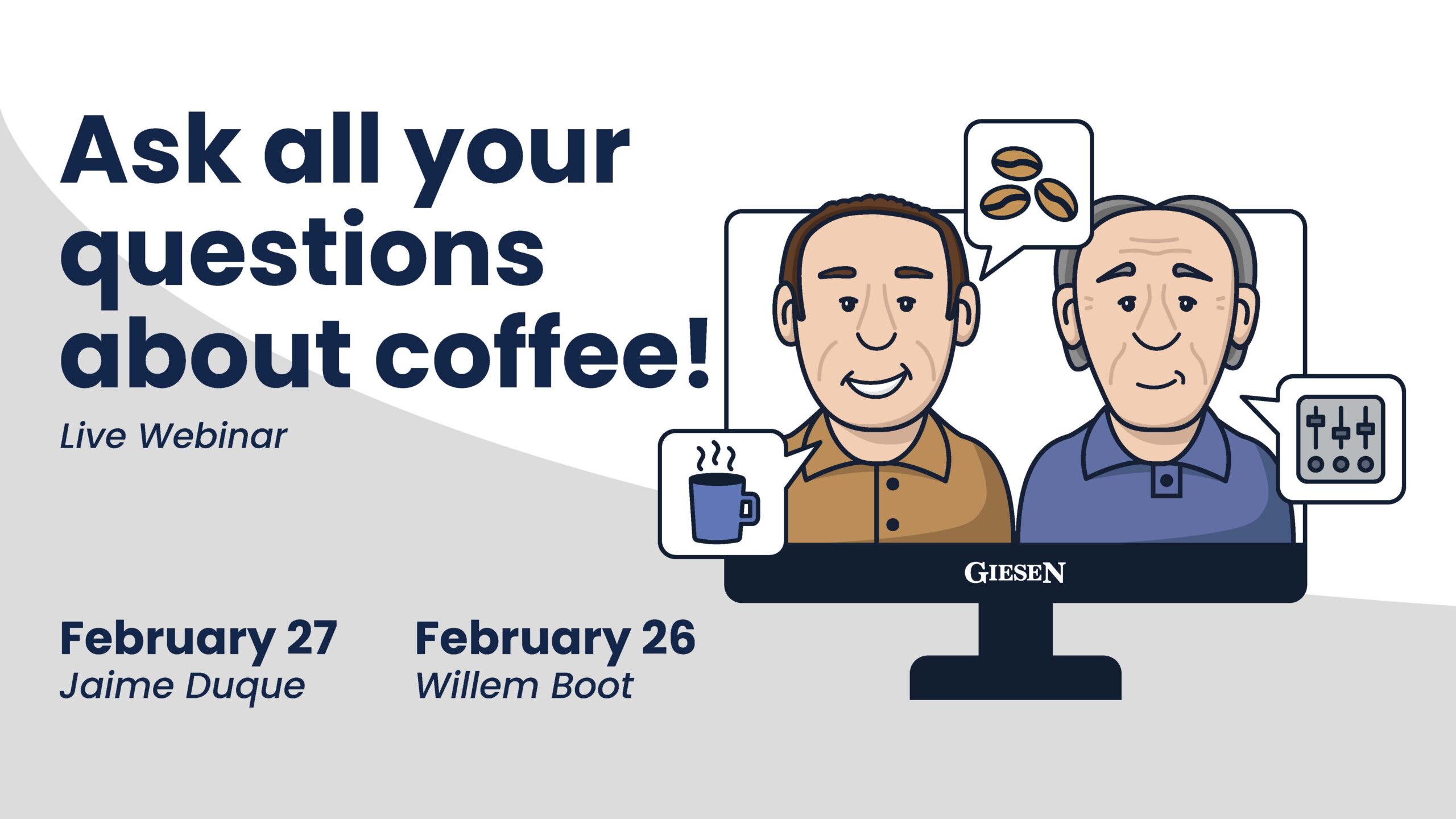Air pressure Profiling for Unique Flavors
by Willem Boot
Giesen roasters are all equipped with a unique feature that allows roastmasters to manipulate the roasting profile with different settings of the operating pressure of the machine. This feature, air pressure profiling, is expressed in Pa (Pascal) and actually indicates the pressure difference between the air coming into the roaster and the air leaving the roaster.
About air pressure profiling
The air pressure setting can typically be adjusted from 80 Pa up to more than 200 Pa. The higher the operating pressure, the more airflow the roaster fan will generate and the more convection heat the machine will apply to the coffee beans. The lower the Pa setting, the more conductive heat the machine will apply for the roasting process. So what’s the big deal with this feature? In my opinion, it creates a huge advantage. Imagine your favorite Colombian coffee with a flavor profile that potentially offers a citrus-like acidity and a dark chocolate body.
Before you read on, make sure you check out our upcoming webinar this Friday! We will do hands-on experimentation with Giesen roasters and there will be plenty of time for questions and answers. In addition to this, we will do a live roasting session as well. Check it out here!
Willem Boot
What difference does air pressure profiling make?
By increasing the Pa settings of the Giesen, you can accentuate the citrus notes of the coffee. Alternatively, you can do the opposite by lowering the Pa value setting towards 100, which will tip the balance of heat transfer more towards conductive heat. This adjustment will accentuate the bittersweet, dark chocolate-like characteristics of this Colombian. I strongly recommend creating profiles with variable settings of the Pa value. For example, at the beginning of the roast, start with a Pa of 90 and gradually increase the setting towards 140 or even higher. The result can be a uniquely balanced flavor profile that features both the citrus notes as well as the dark chocolate flavors. Each distinct air pressure profile will also highlight different characteristics of the coffee. As a result, this air pressure feature offers highly effective options to successfully alter the flavor profiles of your roasted coffee beans.
Next column and webinar
In my next column, I will visit a Giesen client in the US who has successfully been overcoming the restrictions and limitations of the current pandemic through a pro-active strategy focusing on whole beans sales.
Please do not hesitate to contact us with any questions regarding these fascinating features of the Giesen roasting machines!
Don’t miss our highly informative Giesen Webinars every last Friday of the month at 9 am Pacific time! As always, we do hands-on experimentation with Giesen roasters and we always cover plenty of interesting roasting information.
Best regards, Willem Boot
Monthly Giesen Webinar:
Join us live on every last Friday of the month at 09:00 Pacific Time (PT)
Or 18:00 Central European Time (CET).
Previous blogs and Webinars:
Blog #1: The moisture of Green Coffee Beans
Webinar #1: Video and text summary
Blog #2: The temperature setpoint option
Webinar #2: Video and text summary
Blog #3: Using the heat soak or heat shock technique
Webinar #3: Video and text summary
Blog #4: Creating profiles using drum speed
Webinar #4: Video and text summary
Blog #5: Using airflow when creating roast profiles
Webinar #5: Video and text summary




